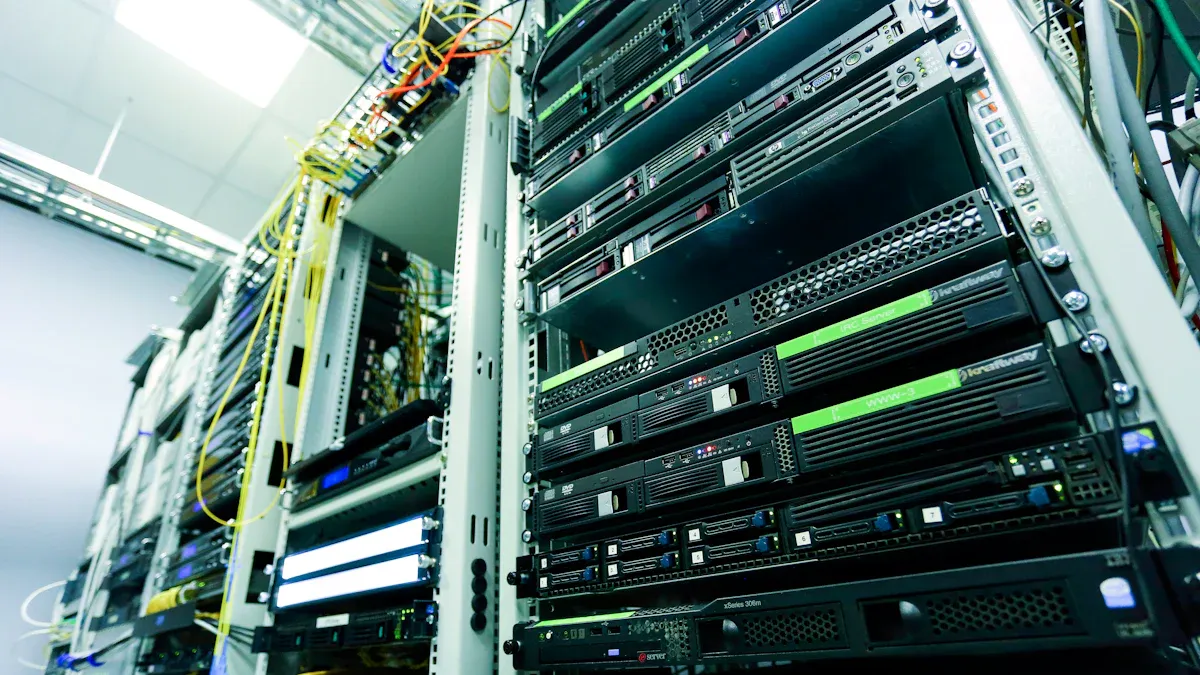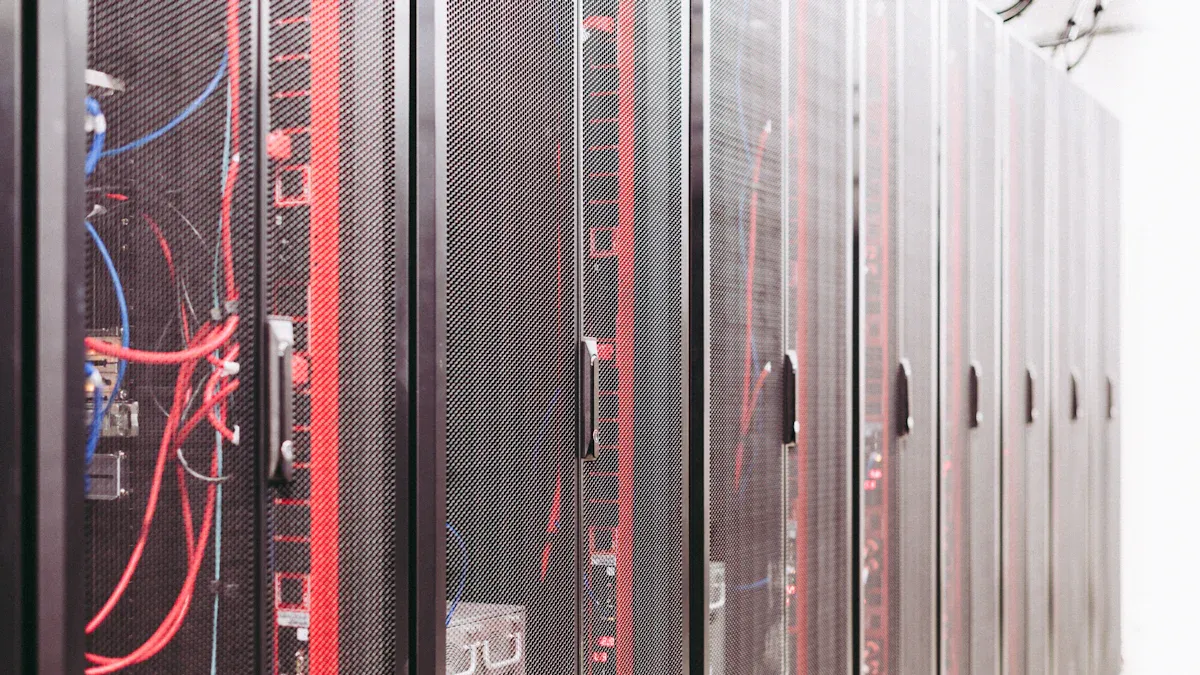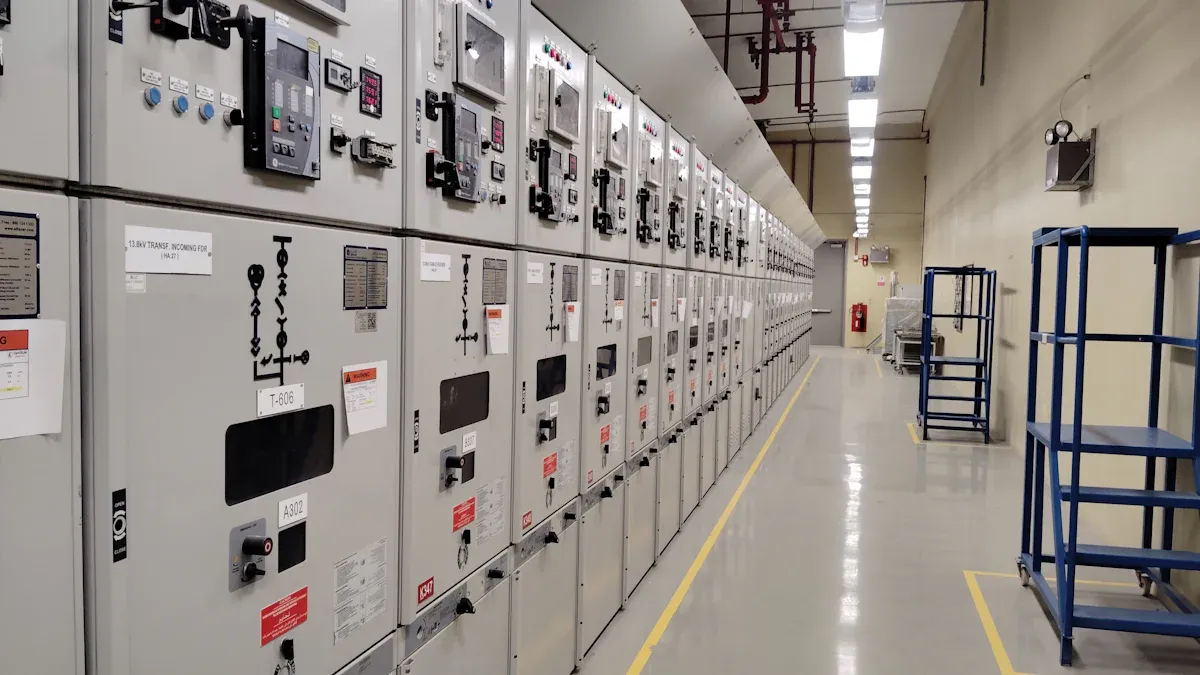
Data centers typically require between 1 to 3 rack PDUs per rack. The exact number depends on factors such as equipment power consumption and redundancy needs. Properly assessing these elements ensures efficient power distribution and enhances the reliability of IT operations.
Key Takeaways
- Assess the power requirements of all equipment in the rack to determine the optimal number of PDUs needed for efficient operation.
- Consider redundancy in your PDU setup to maintain uptime and reliability, especially in critical data center environments.
- Choose between basic and smart PDUs based on your monitoring and management needs to enhance power distribution efficiency.
Understanding Power Requirements

Equipment Power Consumption
Power consumption is a critical factor when determining the number of rack PDUs needed. Each piece of equipment in a rack has a specific power draw, which can vary significantly based on its function and configuration. For instance, a fully populated rack may have a total power draw of 8.4 kW. In contrast, a three-phase 208V 50A PDU can handle up to 14.4 kW. This capacity allows for some flexibility in power distribution, but it also necessitates careful planning to avoid overloading the PDU.
| Description | Value |
|---|---|
| Total power draw of fully populated rack | 8.4 kW |
| Capacity of a three-phase 208V 50A PDU | 14.4 kW |
To ensure optimal performance, data center managers must calculate the total power requirements of all devices in the rack. This calculation should include not only the current load but also potential future expansions. By doing so, they can select the appropriate number of rack PDUs to accommodate both present and anticipated needs.
Redundancy Needs
Redundancy is essential for maintaining uptime and reliability in data centers. Implementing redundancy across critical components helps ensure that operations continue smoothly, even in the event of a failure. Here are some industry best practices for redundancy in rack PDU deployment:
- Implement redundancy across critical components such as power supplies, network paths, and storage systems to ensure immediate fallback in case of failure.
- Use dual power feeds to servers and UPS systems to prevent downtime from power supply failures.
- Ensure redundant networking paths and switches for continuous connectivity during network failures.
- Consider geographic redundancy by mirroring data centers in different locations to mitigate risks from regional disasters.
Data centers classified as Tier III and Tier IV have specific approaches to redundancy. Tier III data centers include multiple power and cooling distribution paths, with only one active at a time. This setup allows for maintenance without disrupting operations. In contrast, Tier IV data centers feature multiple independent, physically isolated power and cooling distribution paths, all active. This design ensures continuous operation, even if a single system component fails.
rack PDU Types

When selecting rack PDUs, understanding the different types available is crucial. The two primary categories are basic PDUs and smart PDUs, each serving distinct purposes in power distribution.
Basic vs. Smart PDUs
Basic PDUs provide straightforward power distribution without advanced features. They simply distribute power to multiple devices without any monitoring or control capabilities. In contrast, smart PDUs offer enhanced functionalities that can significantly improve data center management. Here are some key differences:
- Monitoring Capabilities: Smart PDUs provide detailed power metrics, allowing users to track energy consumption effectively. Basic PDUs lack these monitoring features.
- Remote Access: Smart PDUs enable remote management through various interfaces, making it easier for IT personnel to monitor and control power distribution from anywhere. Basic PDUs do not offer this capability.
- Control Features: Smart PDUs allow for control of individual outlets, enabling users to turn devices on or off remotely. Basic PDUs simply distribute power without any control options.
The choice between basic and smart PDUs often depends on the specific needs of the data center. For environments requiring detailed monitoring and management, smart PDUs are the preferred option.
Vertical vs. Horizontal PDUs
Rack PDUs also come in vertical and horizontal designs, each with its advantages and disadvantages. Understanding these differences can help optimize rack space utilization and power distribution.
| Feature | Vertical PDUs | Horizontal PDUs |
|---|---|---|
| Space Utilization | Zero-U design saves rack space for equipment. | Occupies 1U or 2U of space. |
| Outlet Density | Can accommodate up to 60 outlets. | Generally fewer outlets available. |
| Accessibility | Can be challenging in tight spaces. | Easier access to outlets. |
| Cable Management | Requires careful planning to avoid clutter. | Simpler cable management. |
| Ideal Use Case | Best for high-density server environments. | Suitable for smaller racks. |
Vertical PDUs attach along the side of a rack, maximizing available space for IT equipment. They can support up to 60 connections, making them ideal for high-density setups. However, they may require careful planning for cable management and can be less accessible in tight spaces.
On the other hand, horizontal PDUs fit into standard rack units, taking up 1U or 2U of space. They provide easier access to outlets, which is beneficial for smaller racks. However, their design limits the number of outlets available, potentially complicating capacity management in high-density data centers.
Facility Layout Considerations
Rack Density
Rack density plays a significant role in determining the number of PDUs required. As data centers evolve, average rack densities have increased dramatically. For instance, the average rack density rose from 7.3 kW in 2019 to over 10 kW in 2020. Projections indicate that densities may reach 15-20 kW per rack by 2025. High-density racks, which can range from 40 kW to 125 kW, demand careful planning for power distribution.
- High-density racks increase the power demands of IT equipment.
- PDUs must accommodate higher power loads and provide monitoring features.
- The number of outlets supported by a PDU depends on its physical size and power handling capacity.
Power Distribution Strategy
Choosing an effective power distribution strategy is crucial for optimizing efficiency and reliability. Various strategies can enhance power management in data centers:
- Implement power capping to limit maximum power consumption.
- Invest in renewable energy integration systems to promote sustainability.
- Use energy-efficient hardware to reduce overall energy consumption.
- Employ intelligent power management tools for real-time monitoring.
A centralized layout can utilize fewer, larger PDUs, simplifying power distribution. Conversely, a decentralized layout requires more PDUs to ensure efficient power distribution and monitoring. Individual PDUs in each rack or row enhance the use of monitoring features, allowing for better management of power resources.
Determining the optimal number of PDUs per rack requires careful consideration of several factors. Key aspects include:
- Power requirements: Assess the power needs of your equipment to ensure optimal operation.
- Outlets: Identify the number of outlets required for all equipment in the rack.
- Monitoring capabilities: Select PDUs with appropriate monitoring features for your needs.
- Management interface: Choose an interface that aligns with your organization’s preferences.
- Reliability: Ensure the manufacturer offers long-term reliability and support.
By evaluating these elements, data center managers can effectively plan their power distribution strategy.
FAQ
What is a PDU?
A PDU, or Power Distribution Unit, distributes electrical power to multiple devices in data centers, ensuring efficient and safe power management.
How do I choose the right PDU?
Consider factors like equipment power consumption, required outlets, and monitoring capabilities to select the appropriate PDU for your rack.
Can I use multiple PDUs in one rack?
Yes, using multiple PDUs can enhance power distribution and provide redundancy, ensuring reliable operation in high-density environments.
Post time: Sep-15-2025





